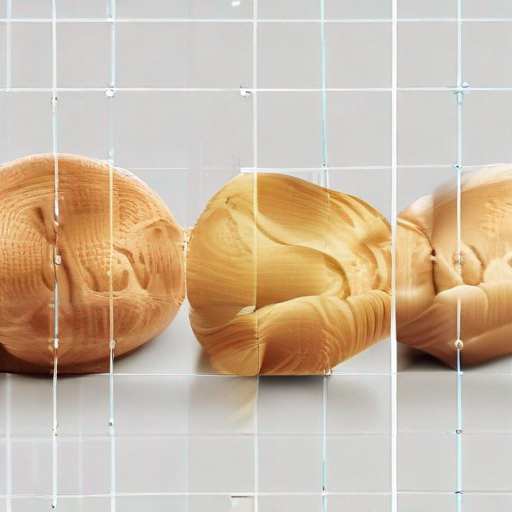Bread Recipe Generator Python: A Step-by-Step Guide to Creating Your Own Bread Recipes
As a bread enthusiast, you know that creating your own recipes can be a daunting task. With so many variables at play – yeast, flour, water, temperature, and more – it’s easy to get overwhelmed. But fear not! With the power of Python programming, you can create your very own bread recipe generator.
In this article, we’ll take you by the hand and guide you through a step-by-step process to create your own bread recipe generator using Python. By the end of this journey, you’ll have a tool that can generate countless bread recipes tailored to your specific preferences.
Understanding Bread Recipe Generation
Before diving into the coding process, let’s take a moment to understand what bread recipe generation is all about. At its core, it’s about creating a program that can generate unique bread recipes based on various parameters such as:
- Flour type: Whole wheat, all-purpose, rye, or others?
- Yeast type: Active dry yeast, instant yeast, or sourdough starter?
- Liquid content: Water, milk, or buttermilk?
- Temperature: Room temperature, warm, or hot?
- Add-ins: Herbs, spices, nuts, or seeds?
These parameters will help shape the final bread recipe, ensuring that it’s tailored to your specific preferences.
Step 1: Gathering Ingredients and Parameters
To create our bread recipe generator, we’ll start by gathering a list of ingredients and parameters. This can be done using Python dictionaries:
python
ingredients = {
"flour": ["whole wheat", "all-purpose", "rye"],
"yeast": ["active dry yeast", "instant yeast", "sourdough starter"],
"liquid": ["water", "milk", "buttermilk"],
"temperature": [20, 25, 30],
"add-ins": ["herbs", "spices", "nuts", "seeds"]
}
Step 2: Defining the Recipe Generation Function
Next, we’ll define a function that will generate the bread recipe based on the provided parameters. This can be done using Python’s random module:
“`python
import random
def generate_recipe():
recipe = {
“flour”: random.choice(ingredients[“flour”]),
“yeast”: random.choice(ingredients[“yeast”]),
“liquid”: random.choice(ingredients[“liquid”]),
“temperature”: random.choice(ingredients[“temperature”]),
“add-ins”: random.choice(ingredients[“add-ins”])
}
return recipe
“`
Step 3: Testing the Recipe Generation Function
Now that we have our recipe generation function, let’s test it to ensure it’s working as expected:
python
print(generate_recipe())
This should output a unique bread recipe based on the provided parameters. You can run this code multiple times to generate different recipes.
Step 4: Refining the Recipe Generation Function
While our basic recipe generation function works, we can refine it further by adding more complexity and nuance. For example, we could include logic for handling yeast types that require specific temperatures or liquid ratios:
“`python
def generate_recipe():
recipe = {
“flour”: random.choice(ingredients[“flour”]),
“yeast”: random.choice(ingredients[“yeast”]),
“liquid”: random.choice(ingredients[“liquid”]),
“temperature”: random.choice(ingredients[“temperature”])
}
if recipe["yeast"] == "sourdough starter":
recipe["liquid"] = "water"
recipe["temperature"] = 25
return recipe
“`
Conclusion
In this article, we’ve taken you on a journey to create your very own bread recipe generator using Python. By following these steps, you’ll have a tool that can generate countless bread recipes tailored to your specific preferences.
Key Takeaways:
| Step | Description |
|---|---|
| 1 | Gather ingredients and parameters in Python dictionaries |
| 2 | Define the recipe generation function using Python’s random module |
| 3 | Test the recipe generation function to ensure it’s working as expected |
| 4 | Refine the recipe generation function by adding complexity and nuance |
Want more?
To learn how to create your own bread recipe generator, check out bread recipe generator python for a comprehensive guide.
Table: Bread Recipe Generator Parameters
| Parameter | Options |
|---|---|
| Flour Type | Whole wheat, all-purpose, rye, and more |
| Yeast Type | Active dry yeast, instant yeast, sourdough starter, and more |
| Liquid Content | Water, milk, buttermilk, and more |
| Temperature | Room temperature, warm, hot, and more |
| Add-ins | Herbs, spices, nuts, seeds, and more |
By creating your own bread recipe generator using Python, you’ll unlock a world of possibilities for experimenting with new flavors and textures. So what are you waiting for? Get baking!
